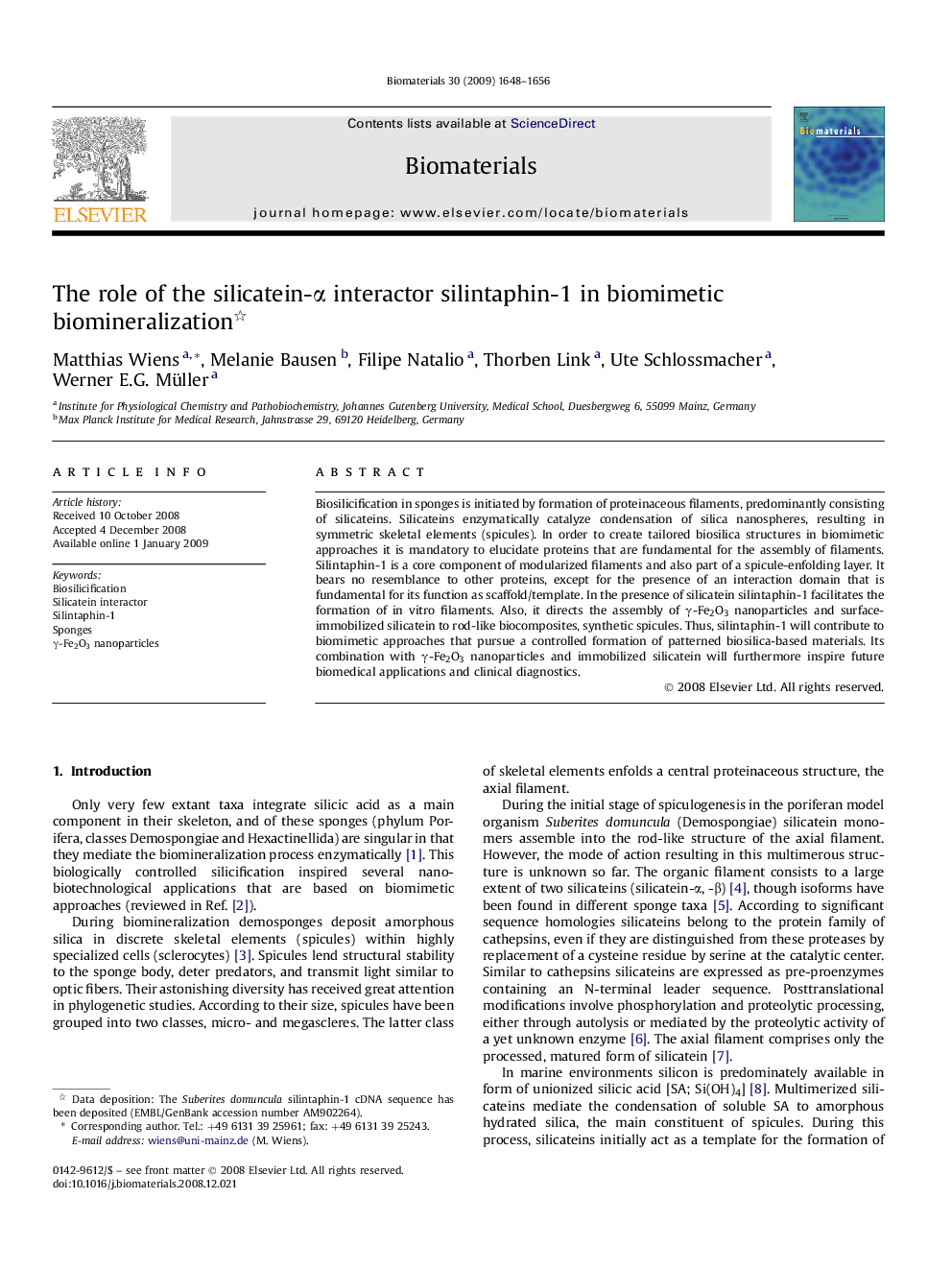| Article ID | Journal | Published Year | Pages | File Type |
|---|---|---|---|---|
| 10168 | Biomaterials | 2009 | 9 Pages |
Biosilicification in sponges is initiated by formation of proteinaceous filaments, predominantly consisting of silicateins. Silicateins enzymatically catalyze condensation of silica nanospheres, resulting in symmetric skeletal elements (spicules). In order to create tailored biosilica structures in biomimetic approaches it is mandatory to elucidate proteins that are fundamental for the assembly of filaments. Silintaphin-1 is a core component of modularized filaments and also part of a spicule-enfolding layer. It bears no resemblance to other proteins, except for the presence of an interaction domain that is fundamental for its function as scaffold/template. In the presence of silicatein silintaphin-1 facilitates the formation of in vitro filaments. Also, it directs the assembly of γ-Fe2O3 nanoparticles and surface-immobilized silicatein to rod-like biocomposites, synthetic spicules. Thus, silintaphin-1 will contribute to biomimetic approaches that pursue a controlled formation of patterned biosilica-based materials. Its combination with γ-Fe2O3 nanoparticles and immobilized silicatein will furthermore inspire future biomedical applications and clinical diagnostics.
